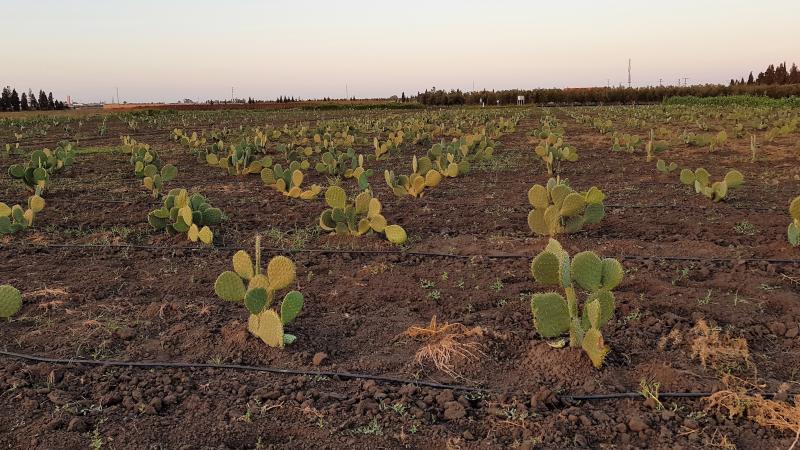Morocco: Identifying the first cactus ecotypes resistant to wild cochineal

Rabat, Morocco – Cactus pear is an important food and feed crop for smallholder farmers in North Africa and the Middle East. It can grow with little water and is tolerant to heat. The fruit can be used for human consumption and to produce medicine and cosmetics. The pads serve as animal feed, especially in the arid zones on degraded lands where shortages of water and feed resources challenge animal production. The plant also plays an important role in soil and biodiversity conservation.
In 2014, a new invasive cochineal species Dactylopius opuntiae was reported for the first time in Saniat Berguig of Doukkala along the northern coast of Morocco. Since then the pest has spread to several other regions of the country, devastating cactus plantations and inflicting heavy economic losses for the whole value chain. There were no control methods available for use against this pest.
A joint team of scientists from ICARDA and the National Institute of Agricultural Research (INRA) screened 249 ecotypes of cactus for resistance to this pest, as part of a control strategy set out by the government, including the Ministries of Agriculture, Marine Fisheries, and Rural Development. The scientists conducted the screening in the field under natural and artificial infestations. They found eight ecotypes that were resistant to the cochineal. These cactus ecotypes will be used to re-establish cactus plantations through Pillar II of the Green Morocco Plan, the government’s initiative to boost the agricultural sector.
The spread of diseases and pests is one of the consequences of climate change in the region. It requires sustainable and practical control options that do not rely exclusively on chemical sprays, which are often costly and harmful to the environment. ICARDA researches and implements integrated pest management to promote sustainable agricultural production system and improve the livelihoods of smallholder farmers.
These eight ecotypes have been registered in the national cactus catalog under the following names: Marjana, Belara, Karama, Ghalia, Angad, Cherratia, Melk Zhar, and Aakria.
For more information, Dr. Mohamed Sbaghi (INRA) or Dr. Mustapha El Bouhssini (ICARDA)
